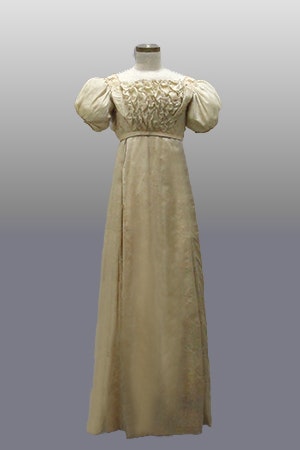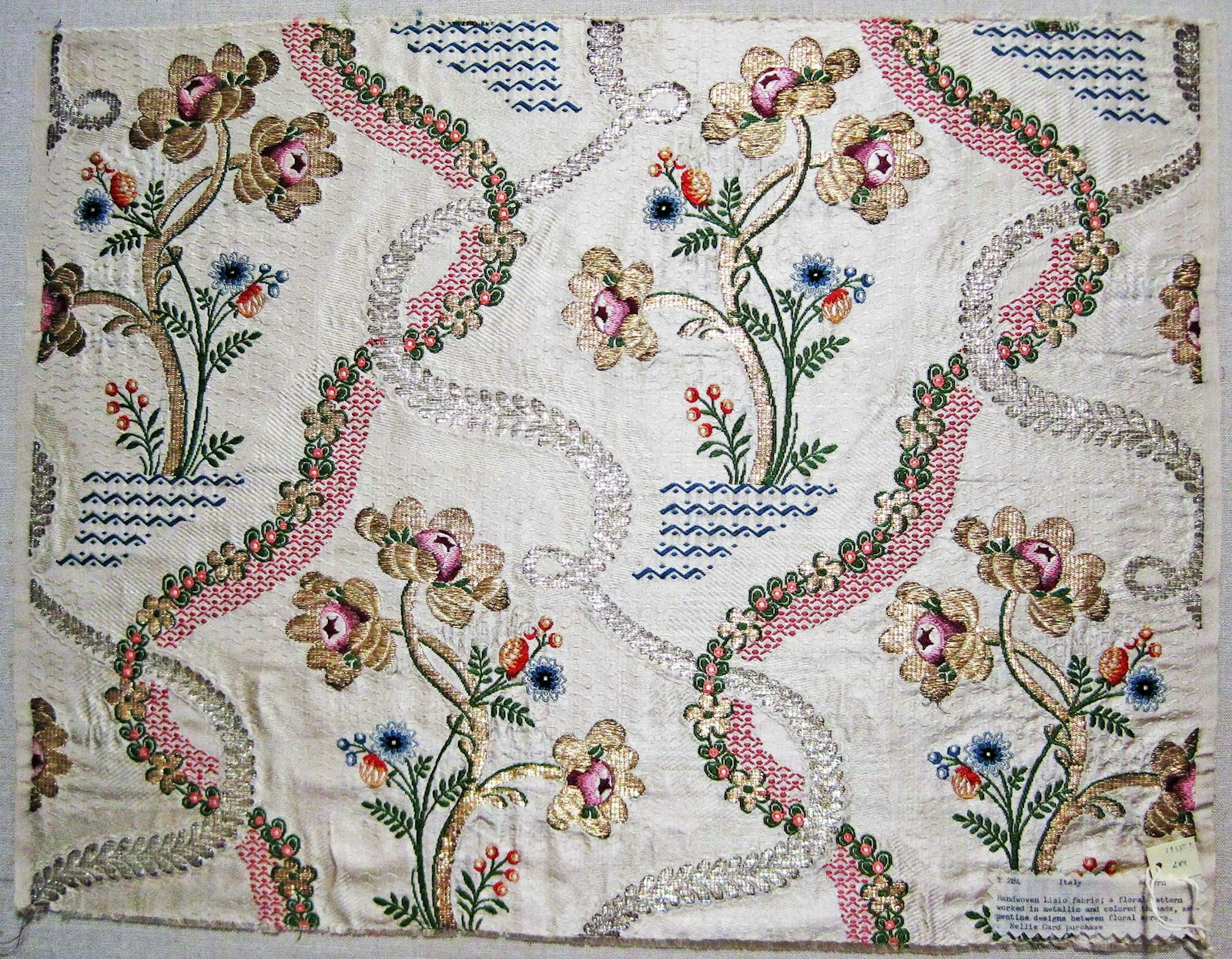The University of Connecticut, like other land-grant institutions, once included a School of Home Economics. Home Ec was an opportunity for women to receive a college degree at a time when entrance into universities was limited because of their gender.
The origins of this now-historic collection
At UConn the original collection of historic clothing and textiles seems to have begun informally, around 1930, with donations from faculty and staff under the direction of faculty member Nellie Gard. By the late 1940s the collection was officially named the M. Estella Sprague Costume Collection in honor of a former Dean of the School of Home Economics.

This is one of the earliest garments in the collection. Dating to about 1810, the high waist of this dress, popular during the Empire period in French history, is what gave the name to the style. UConn 1951C.1804.2
In the 1940s faculty member Margaret R. Gaylord reached out to the Wadsworth Atheneum for advice on setting up a system to catalogue the growing collection. By 1962 records indicate that the Sprague Collection housed about 1550 garments and 600 textiles. Courses such as “Costume Design” were taught to provide students with the "opportunity to develop originality in the design of costumes and to appreciate line, color, and texture in relation to the human figure." The university offered a major in “Clothing, Textiles and Related Arts” with a focus on clothing, dress, and costume design and construction. Student papers include analyses of individual garments and a catalog of the lace collection.

Strapless evening dress from 1988. The pleating on the bodice and skirt shows an influence from Mary McFadden's gowns of the 1970s. She, in turn, was inspired by Fortuny's Delphos gowns of the early 20th century. UConn 1997C.1988.16
The 1980s proved a time of change for the School of Home Economics. Home economics, as a major, experienced a backlash as questions arose on the benefits of teaching such classes. Women were admitted to all departments and areas of study. The Department of Human Development and Family Studies replaced the outdated home ec department, leaving the collection in jeopardy. Of what value was it to the university?
What the future holds
It was the Drama Department that stepped in. Under the auspices of now-retired professor Laura Crow, the School of Fine Arts became responsible for the collection, now numbering about 7500 items. Several years ago, a consultant evaluated most of the items in preparation for a new beginning. This began recently, when I was hired as Curator and Registrar of the M. Estelle Sprague Costume Collection.

Woman's checked coat, c. 1905. UConn 1905.7
My job is to develop a collection suitable to be included in the William Benton Museum of Art, the museum of the State of Connecticut. The Sprague Collection, predominantly women’s clothing, includes garments and numerous accessories from three centuries. Pucci dresses and Scaasi gowns are stored near equally opulent ensembles from the mid 1800s. A fabulous set of beach pajamas from the 1930s would look very modern today, with its wide palazzo-style pants and plaid fabric. Two dresses from the 1830s, donated by Elizabeth Adams Noyes, were given along with 7.5 linear feet of written material now housed in the Archives & Special Collections; records from 150 years of her family's history in Connecticut. This support between collections at UConn is one important way that the M. Estelle Sprague Costume Collection will continue as a resource for students, faculty, researchers and the people of Connecticut.
See Susan's article on lappet weaving in the upcoming Summer 2022 issue of PieceWork, coming in April. -Editors
Susan J. Jerome is Collections Manager of the Historic Textile and Costume Collection at the University of Rhode Island. She also is the Curator and Registrar of the Historic Costume Collection at the University of Connecticut. Susan conserves samplers for private clients and consults for museums and historical societies. She enjoys all kinds of needlecraft and educating people about the history of textiles, clothing, and handwork.

